The European Commission considers the corridors the most important instrument for delivering the core TEN network. The planning and determination of the core network corridors took place after the core TEN network had been defined on the basis of a special methodology of the European Commission. In doing so, efforts were made to integrate the existing ERTMS and rail freight corridors. According to the European Commission, the core network corridors are to make a crucial contribution towards delivering the entire core network by the end of 2030. Each corridor is managed by a coordinator. Together with the Member States concerned, they draw up work plans and implement them. In addition, the coordinators receive support from corridor forums and working groups, to which infrastructure managers as well as representatives from the regions and civil society can be invited. However, decisions can only be taken with the Member States.
After consultation with the Member States affected, the Commission appointed the following coordinators:
- Catherine Trautmann (North Sea-Baltic Corridor)
- Pat Cox (Scandinavian-Mediterranean Corridor)
- Carlo Secchi (Atlantic Corridor)
- Péter Balázs (North Sea-Mediterranean Corridor)
- Iveta Radičová (Mediterranean Corridor)
- Inés Ayala Sender (Rhine-Danube Corridor)
- Pawel Wojciechowski (Rhine-Alpine Corridor)
- Anne Elisabet Jensen (Baltic Adriatic Corridor)
- Mathieu Grosch (Orient-East-Med Corridor)
Additionally, there are coordinators for two "horizontal priorities":
- Kurt Bodewig (Motorways of the Sea / MoS)
- Matthias Ruete (European Rail Traffic Management System / ERTMS)
There are six corridors running through Germany, and thus more than through any other Member State: the North Sea-Baltic, Scandinavian-Mediterranean, Atlantic, Rhine-Danube, Rhine-Alpine and Orient-East-Med. Furthermore, Germany is involved in the two horizontal priorities, MoS and ERTMS.
There are six corridors running through Germany, and thus more than through any other Member State: North Sea-Baltic, Scandinavian-Mediterranean, Atlantic, Rhine-Danube, Rhine-Alpine and Orient/East-Med. Furthermore, Germany is involved in the two horizontal priorities, MoS and ERTMS.
In 2014, the coordinators, together with the Member States and supported by a consortium of consultants, conducted extensive corridor studies, which were continued under different aspects in the following years. The studies investigated the extent to which the corridors meet the requirements or the technical parameters of the TEN Regulation for the comprehensive or core network. At the same time, they were to identify major deficiencies, whose elimination is a priority from a European perspective. This was the basis for work plans that define priorities for future activities on the respective corridor. The work plans were revised again in the first half of 2020 and coordinated with the Member States. According to the European Commission, the most severe problems continue to exist in cross-border infrastructure, technical interoperability (e.g. ERTMS) and the integration of the different modes of transport.
The cooperation between the Federal Ministry for Digital and Transport (BMDV) and the coordinators is close and conducted in an environment of trust. This is especially due to a broad consensus with respect to prioritization. Almost all major upgrading and new construction projects under the 2030 Federal Transport Infrastructure Plan are located on TEN corridors. Additionally, the majority of the funds for structural maintenance are allocated to the TEN-T network.
North Sea-Baltic | |
 Catherine Trautmann Coordinator | 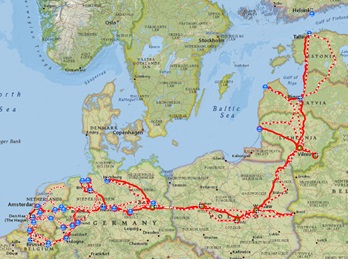 |
| Features | The North Sea-Baltic Corridor is 3.200km long, only runs through Northern Europe and connects the Baltic Sea region of Helsinki via the Baltic States with the North Sea region in Belgium and the Netherlands via Poland and Germany. It includes Rotterdam, Antwerp, Hamburg, Bremen/Bremerhaven and Amsterdam and, thus, the five largest ports of Europe. The traffic volume in the Western part is very different from the Eastern part. |
| Major projects of the European Commission on the Corridor |
|
| Major ongoing projects in Germany |
|
 | |
Atlantic | |
 Prof. Carlo Secchi Coordinator | 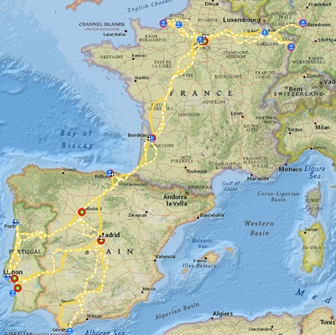 |
| Features | The Atlantic Corridor comprises over 6,500km of railways, 4,500km of roads and 290km of inland waterways, seven inland ports, eight sea ports, seven core network airports, 14 road/rail terminals and seven urban core network nodes. |
| Major projects of the European Commission on the Corridor |
|
| Major ongoing projects in Germany |
|
 | |
Rhine-Danube | |
 Inés Ayala Sender Coordinator |  |
| Features | The Atlantic Corridor consists of 5,700km of railways, 4,870km of roads network and 3,650km of inland waterways, 19 inland ports, two sea ports, 11 core network airports, 27 road/rail terminals and 14 trimodal terminals. |
| Major projects of the European Commission on the Corridor |
|
| Major ongoing projects in Germany |
|
 | |
Rhine-Alpine | |
 Pawel Wojciechowski Coordinator | 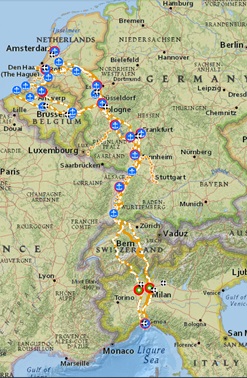 |
| Features | The Rhine-Alpine Corridor runs through the major Western German industrial centres and some of the most densely populated and richest areas of the EU. It connects the Dutch and Belgian North Sea ports with the Mediterranean region and is one of the busiest freight routes in Europe. |
| Major projects of the European Commission on the Corridor |
|
| Major ongoing projects in Germany |
|
 | |
Orient - East Med | |
 Mathieu Grosch Coordinator | 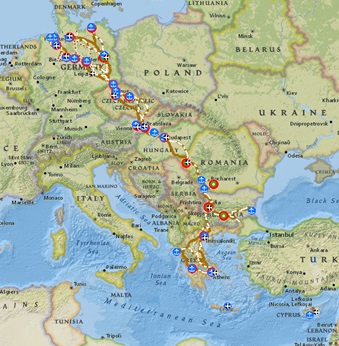 |
| Features | The Atlantic Corridor comprises over 5,900km of railways, 5,600km of roads and 1,600km of inland waterways, 10 inland ports, 12 sea ports, 15 core network airports, 25 road/rail terminals and 15 urban core network nodes. |
| Major projects of the European Commission on the Corridor |
|
| Major ongoing projects in Germany |
|
 | |
Scandinavian-Mediterranean | |
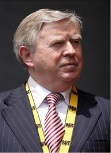 Pat Cox Coordinator | 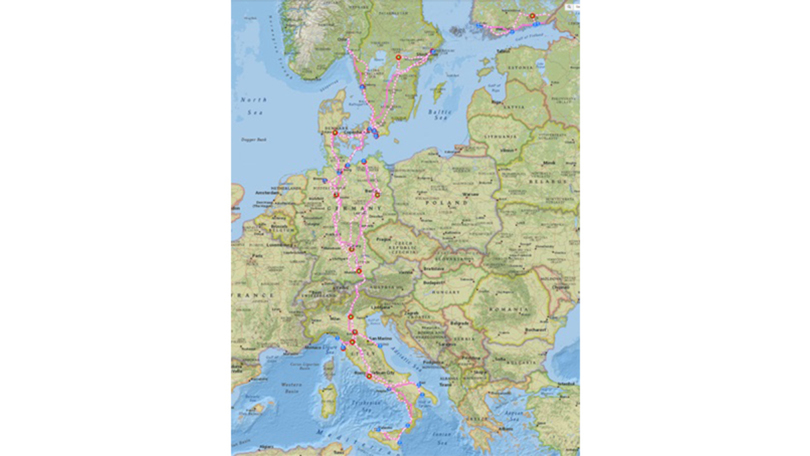 |
| Features | The Scandinavian-Mediterranean Corridor contains over 9,300km of railways and 6,300km of road network and is thus the longest core network corridor. 25 core network ports, 19 core network airports, 44 road/rail terminals and 18 urban core network nodes. |
| Major projects of the European Commission on the Corridor |
|
| Major ongoing projects in Germany |
|
 | |
"Motorways of the Sea" | |
 Prof. Kurt Bodewig Coordinator | Within the context of delivering the trans-European transport network, the Motorways of the Sea are part of the horizontal priorities. The definition of the Motorways of the Sea is enshrined in Article 21 of the TEN Regulation 1315/2013: Motorways of the sea, representing as they do the maritime dimension of the trans-European transport network, shall contribute towards the achievement of a European maritime transport space without barriers. They shall consist of short-sea routes, ports, associated maritime infrastructure and equipment, and facilities as well as simplified administrative formalities enabling short-sea shipping or sea-river services to operate between at least two ports, including hinterland connections. According to this priority, Coordinator Kurt Bodewig pursues the following objectives:
|
| Examples of projects with German participation |
|
 | |
ERTMS | |
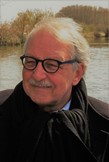 Matthias Ruete Coordinator | The implementation of the European Rail Traffic Management System (ERTMS) is another horizontal priority in the delivery of the trans-European transport network. The overall objective of this priority is to enable interoperability along the entire rail network of the European Union. In accordance with TEN Regulation 1315/2013, the rail infrastructure of the core network is to be completed by the end of 2030 and the rail infrastructure of the comprehensive network is to be entirely equipped with ERTMS by 2050. Isolated networks form an exception from this requirement. |
| Examples of projects in Germany or with German participation |
|
 | |
On 29 May 2019, the EU Coordinators to the Ministry in Berlin were welcomed. In very constructive talks, the objectives of the new funding period as well as the challenges facing innovative transport policy in the EU were discussed.